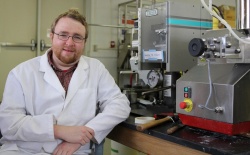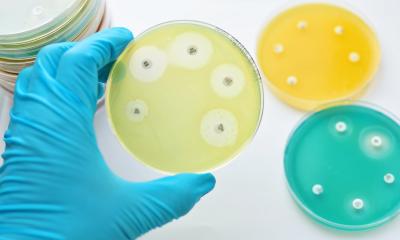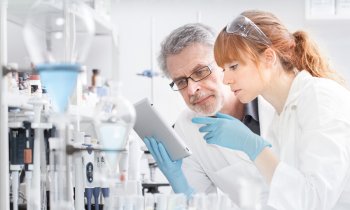Plastic plus egg whites
Recipe for antibacterial plastic
Bioplastics made from protein sources such as albumin and whey have shown significant antibacterial properties, findings that could eventually lead to their use in plastics used in medical applications such as wound healing dressings, sutures, catheter tubes and drug delivery, according to a recent study.

Researchers from the University of Georgia College of Family and Consumer Sciences tested three nontraditional bioplastic materials--albumin, whey and soy proteins--as alternatives to conventional petroleum-based plastics that pose risks of contamination.
In particular, albumin, a protein found in egg whites, demonstrated tremendous antibacterial properties when blended with a traditional plasticizer such as glycerol.
"It was found that it had complete inhibition, as in no bacteria would grow on the plastic once applied," said Alex Jones, a doctoral student in the department of textiles, merchandising and interiors. "The bacteria wouldn't be able to live on it."
The study appears in the online version of the Journal of Applied Polymer Science.
One of the researchers' aims is to find ways to reduce the amount of petroleum used in traditional plastic production; another is to find a fully biodegradable bioplastic. The albumin-glycerol blended bioplastic met both standards, Jones said: "If you put it in a landfill, this being pure protein, it will break down," he said. "If you put it in soil for a month--at most two months--these plastics will disappear."
The next step in the research involves a deeper analysis of the albumin-based bioplastic's potential for use in the biomedical and food packaging fields.
As noted in the study, 4.5 hospital admissions out of every 100 in the U.S. in 2002 resulted in a hospital-acquired infection. In addition to the risk of contamination in hospitals, food contamination as a result of traditional plastics is a notable risk. Researchers are encouraged by the antimicrobial properties of albumin-based bioplastics that could potentially reduce these risks through drug elution--loading the bioplastic with either drugs or food preservatives that can kill bacteria or prevent it from spreading.
Source: Press release University of Georgia
01.04.2015











